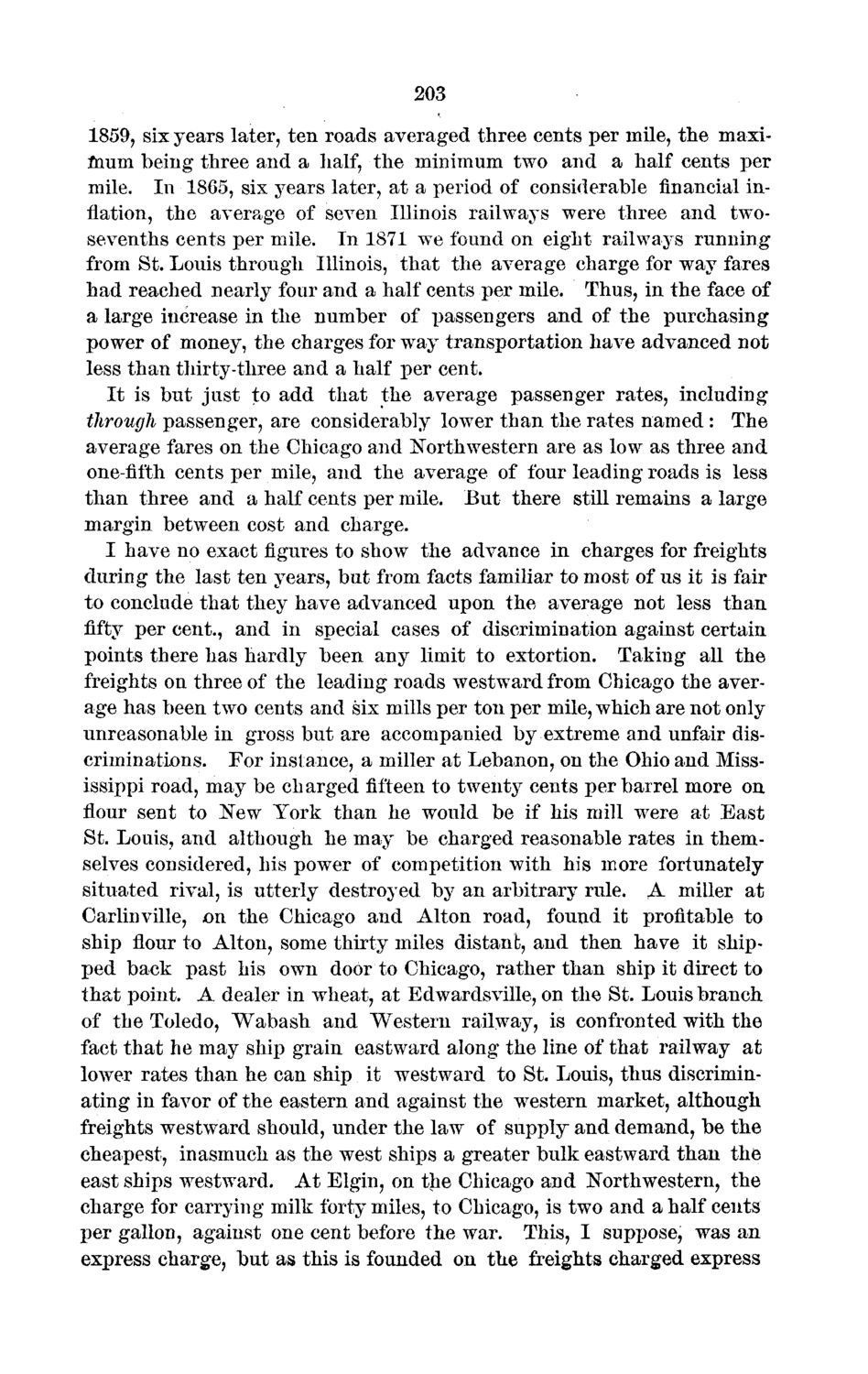| |
| |
Caption: Board of Trustees Minutes - 1872
This is a reduced-resolution page image for fast online browsing.

EXTRACTED TEXT FROM PAGE:
203 1859, six years later, ten roads averaged three cents per mile, the maximum being three and a half, the minimum two and a half cents per mile. In 1865, six years later, at a period of considerable financial inflation, the average of seven Illinois railways were three and twosevenths cents per mile. In 1871 we found on eight railways running from St. Louis through Illinois, that the average charge for way fares had reached nearly four and a half cents per mile. Thus, in the face of a large increase in the number of passengers and of the purchasing power of money, the charges for way transportation have advanced not less than thirty-three and a half per cent. It is but just to add that the average passenger rates, including through passenger, are considerably lower than the rates named: The average fares on the Chicago and Northwestern are as low as three and one-fifth cents per mile, and the average of four leading roads is less than three and a half cents per mile. But there still remains a large margin between cost and charge. I have no exact figures to show the advance in charges for freights during the last ten years, but from facts familiar to most of us it is fair to conclude that they have advanced upon the average not less than fifty per cent., and in special cases of discrimination against certain points there has hardly been any limit to extortion. Taking all the freights on three of the leading roads westward from Chicago the average has been two cents and six mills per ton per mile, which are not only unreasonable in gross but are accompanied by extreme and unfair discriminations. For instance, a miller at Lebanon, on the Ohio and Mississippi road, may be charged fifteen to twenty cents per barrel more on flour sent to New York than he would be if his mill were at East St. Louis, and although he may be charged reasonable rates in themselves considered, his power of competition with his more fortunately situated rival, is utterly destroyed by an arbitrary rule. A miller at Carlinville, on the Chicago and Alton road, found it profitable to ship flour to Alton, some thirty miles distant, and then have it shipped back past his own door to Chicago, rather than ship it direct to that point. A dealer in wheat, at Edwardsville, on the St. Louis branch of the Toledo, Wabash and Western railway, is confronted with the fact that he may ship grain eastward along the line of that railway at lower rates than he can ship it westward to St. Louis, thus discriminating in favor of the eastern and against the western market, although freights westward should, under the law of supply and demand, be the cheapest, inasmuch as the west ships a greater bulk eastward than the east ships westward. At Elgin, on the Chicago and Northwestern, the charge for carrying milk forty miles, to Chicago, is two and a half cents per gallon, against one cent before the war. This, I suppose, was an express charge, but as this is founded on the freights charged express
| |